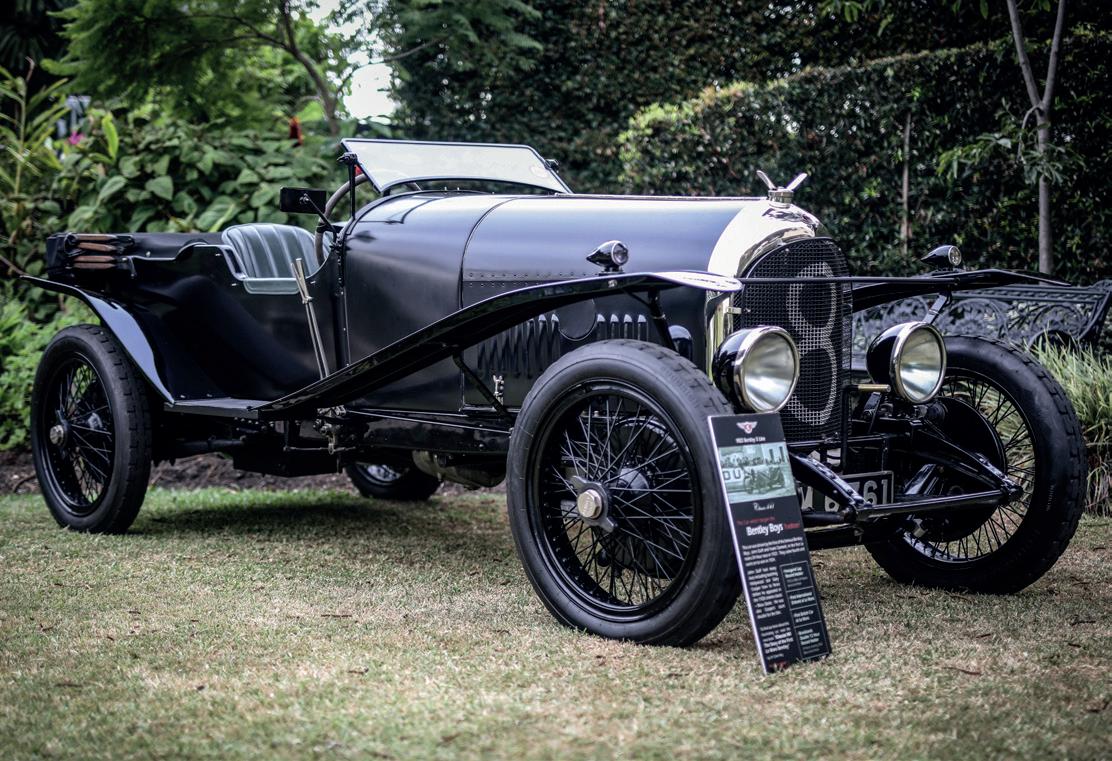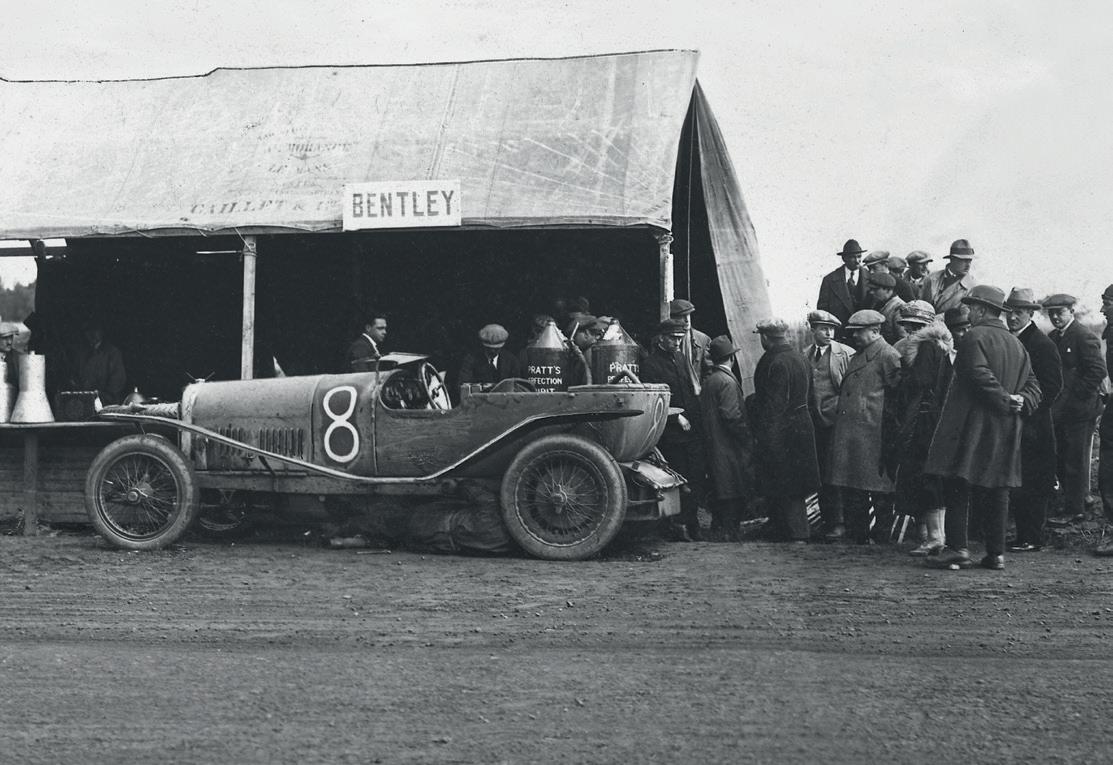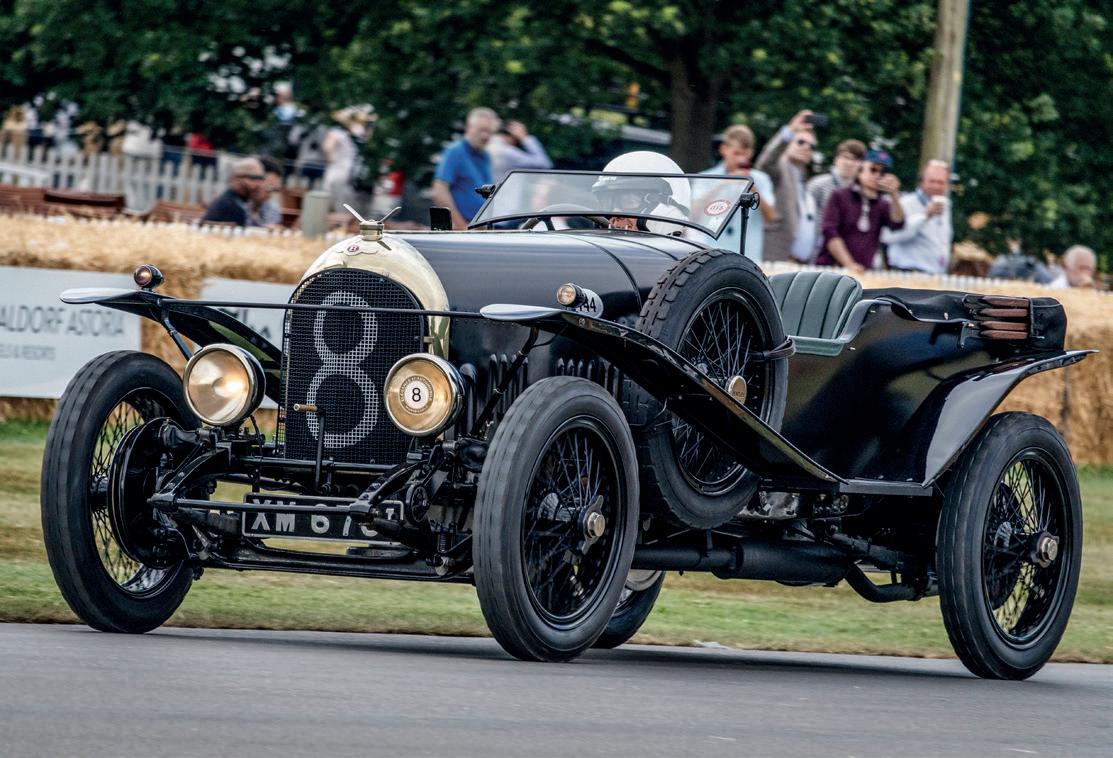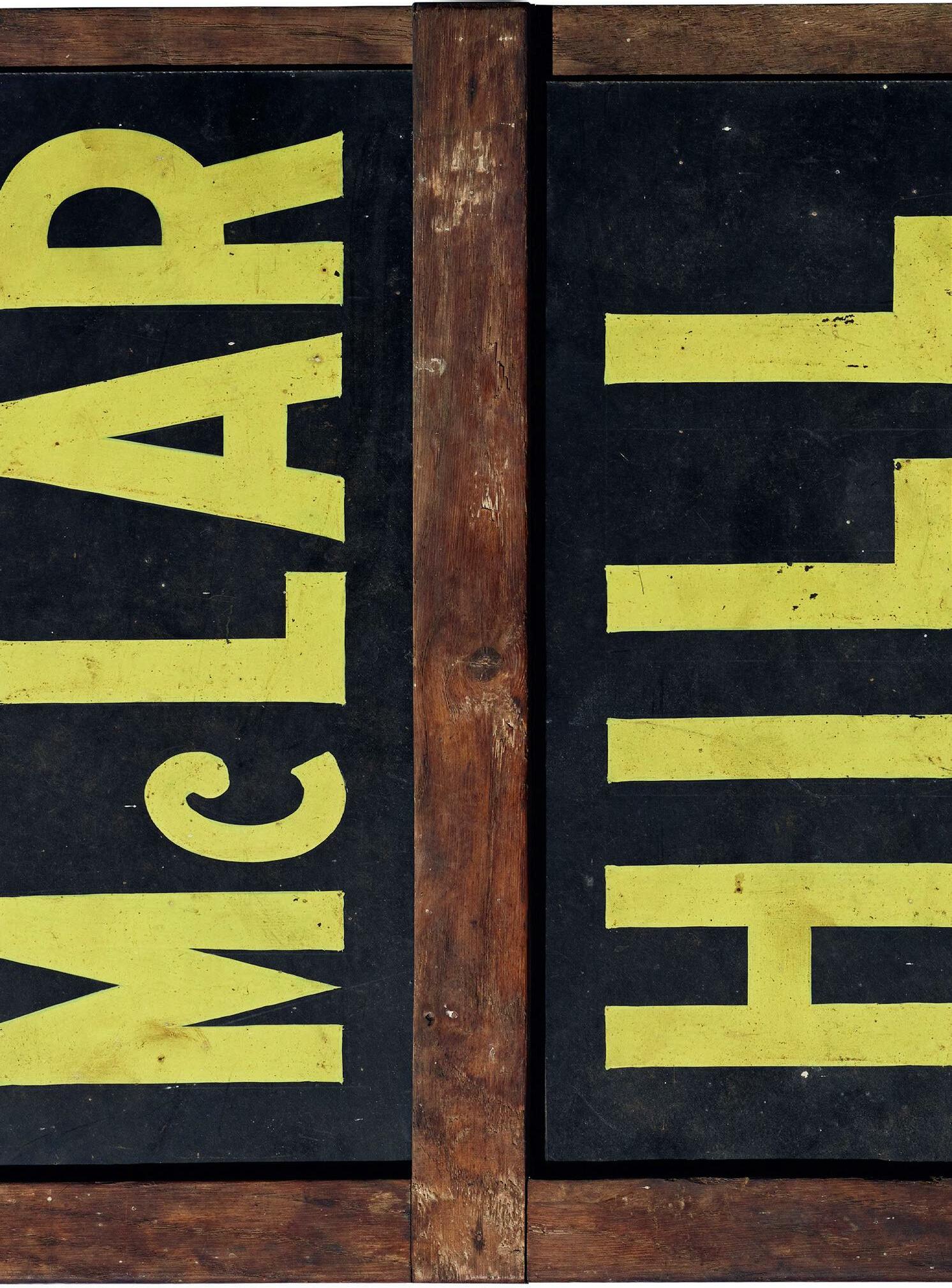
3 minute read
The first Le Mans Bentley
A unique history in the 24 Hours makes this 3 Litre the forerunner of all Bentley Team cars. Now it’s for sale
THE POSITION OF THE BENTLEY marque in automobile history is firmly established. Its 3 Litre typifies British thinking on the subject of sports car design in the 1920s, with the prototype taking to the road over 100 years ago upon the founding of Bentley Motors in 1919.
What finer motor car to celebrate the centenary of the Le Mans 24 Hours than Bentley chassis no. 141? This 3 Litre ran in the first-ever Le Mans race in May 1923 as a private entry piloted by London Bentley dealer Captain John Duff and marque test driver Frank Clement.
At Le Mans, where so much of Bentley’s history has been written, no. 141 – which was also the first international entry in that race –finished in fourth place and set the inaugural lap record of 66.69mph. In 1924, Duff and Clement returned to France to win in another 3 Litre. Chassis no. 141 is fitted with a body by Park Ward, and its engine (no. 62) was originally installed in Bentley Experimental Car no. 2 and was the team’s spare motor for the 1922 Tourist Trophy. The car was delivered to Captain Duff, one of the original Bentley Boys, on September 22, 1922, and only days later it set several speed records at Brooklands, including the Double-12-Hour.

Duff also raced this 3 Litre Tourer at the Surrey circuit, recording several wins and sometimes sharing the driving with WO Bentley himself. In addition, no. 141 ran in the Essex MC Brooklands Meeting, BARC Brooklands Meeting, Essex MC Kop Hillclimb, GP de Tourisme, Guipúzcoa (the 12-hour race at Saint-Sébastien) and Georges Boillot Cup on the street circuit at Boulogne-sur-Mer. This remarkable motor car has had a definitive book – Chassis 141: The Story of the First Le Mans Bentley –written about it by the acknowledged
Bentley historian Dr Clare Hay.
After an incredible restoration by its current owners was completed in 2001, no. 141 appeared at the Pebble Beach Concours d’Elegance in 2001 and 2009, and was driven at the inaugural Pebble Beach Motoring Classic in 2005 as well as led the parade at the Le Mans course in 2001. It also crossed the Nullarbor Plain en route from Perth to Sydney during the Bentley Down Under Rally in 2005. It appeared at the 2017
Concours of Elegance at Hampton Court Palace and the 21 Gun Salute in New Delhi in 2018. The well travelled car was also shown in 2019 as part of the Bentley Centenary celebrations at Pebble Beach, and earlier that same year at the Sydney Harbour Concours d’Elegance.

Owned since the 1980s by those indomitable collectors and rally participants Peter and Robin Briggs, of Perth in Western Australia, no. 141 is now – upon Peter’s sad passing last year – being made available for sale. It has been transported to the UK, where it is being represented by Simon Kidston, himself the nephew of 1920s Bentley Boy Commander Glen Kidston, on behalf of the estate of Peter Briggs.
As the first British car to race at the very first Le Mans 24 Hours, no. 141 is the car that put Bentley Motors on the map. While many Bentley Team machines survive, it can lay claim to being the forerunner of them all.
FROM TOP Chassis no. 141 was revered at events around the world –including at Goodwood –having raced at the first Le Mans.



















The Object 1960s F1 pitboard
This evocative piece of motor-racing automobilia came from a surprising source – and raises the question of which Hill: Graham or Phil?

COMMUNICATION BETWEEN THE pitwall and the cockpit has been everpresent in motor racing; nowadays radios and even direct messaging to steering wheels allow drivers to have more information than ever before.
This 1963 pitboard, acquired from an ex-ATS mechanic, was the means of communication back then.
Bruce McLaren, Jack Brabham, John Surtees and Chris Amon are all easily recognisable names, but perhaps ATS driver Phil Hill may have been confused as to whether it was him running second or rival Graham Hill. Given the success (or lack thereof) of the ATS Tipo 100, we would take a guess and say it was Graham. ATS, or Automobili Turismo e Sport to give its full name, was formed by Giotto Bizzarrini and Carlo Chiti, with backing from Count Volpi. Its first and only season in Formula 1 was 1963, in which it started five races and finished only once – when Phil Hill took 11th and Giancarlo Baghetti came in 15th at Monza.
When Volpi withdrew his support, the ATS 100 was sold to Alf Francis, former chief mechanic to Stirling Moss. It subsequently appeared just once, in the 1964 Italian Grand Prix.










